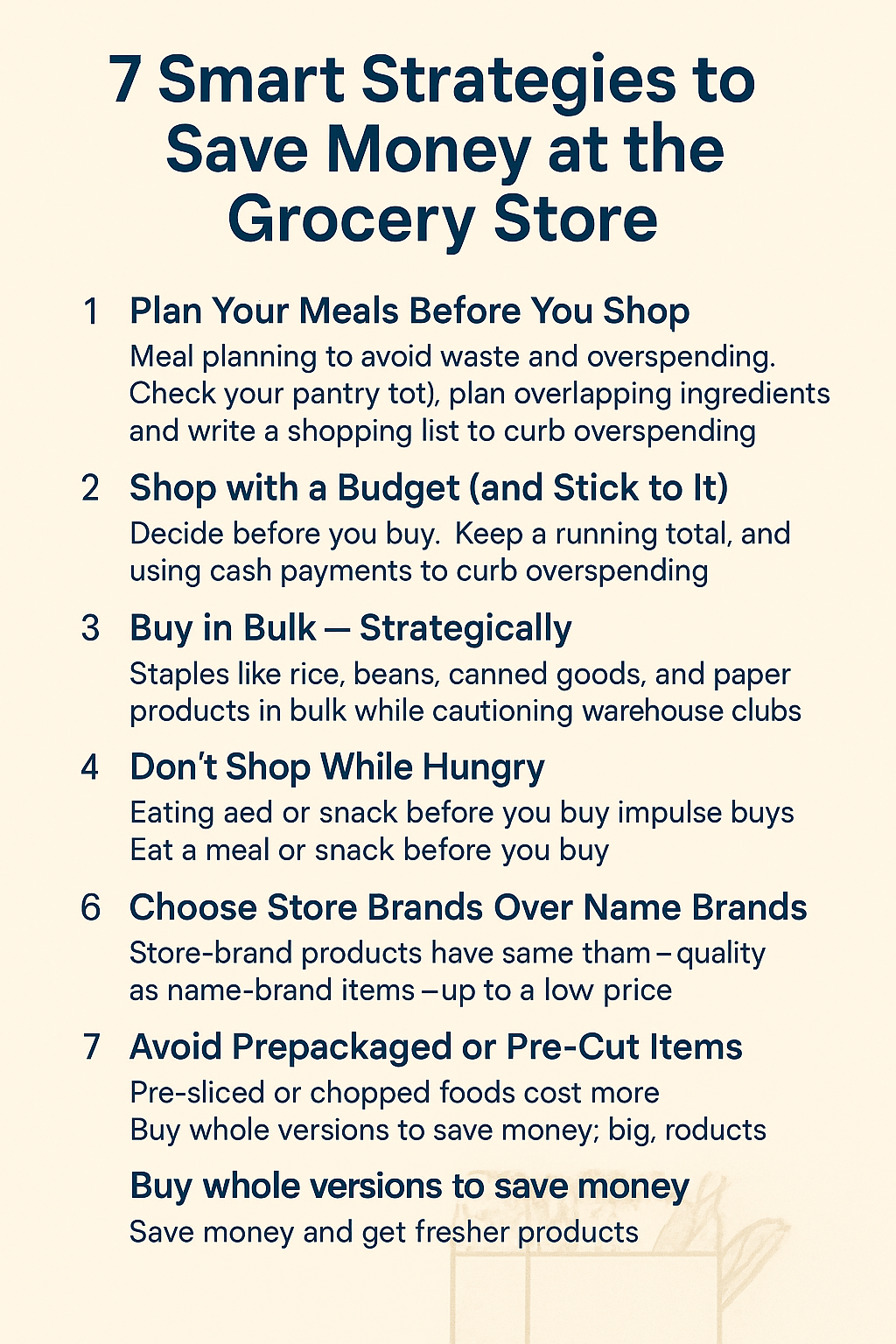Grocery shopping is one of the most consistent and necessary expenses in any household — but it doesn’t have to break the bank. With a few smart strategies, you can reduce your grocery bill significantly without sacrificing nutrition, quality, or taste. Whether you’re shopping for one or a family of five, here are seven practical ways to save money every time you hit the supermarket.
1. Plan Your Meals Before You Shop
Meal planning is one of the most effective ways to avoid waste and overspending. When you know exactly what you’re going to cook during the week, you only buy the ingredients you need.
Start by:
- Checking what’s already in your pantry or fridge
- Planning meals that use overlapping ingredients
- Writing a shopping list based on your meal plan
Stick to your list to avoid impulse purchases. Apps like Mealime or Paprika can help streamline this process.
2. Shop with a Budget (and Stick to It)
Before you head to the store, decide how much you want to spend. Then keep a running total in your cart or phone calculator as you shop. This helps you make intentional decisions and avoid surprises at checkout.
Consider using cash instead of cards for your grocery trips. Physically handing over cash creates a psychological barrier that helps curb overspending.
3. Buy in Bulk — Strategically
Buying in bulk can lead to big savings, especially for non-perishable items like:
- Rice, pasta, and beans
- Toilet paper and paper towels
- Canned goods
- Frozen vegetables
But not everything is worth buying in large quantities. Be cautious with perishable foods and make sure you’ll use what you buy before it goes bad.
If your space allows, consider shopping at warehouse clubs like Costco or Sam’s Club for deep discounts on staple items.
4. Use Coupons, Store Apps, and Loyalty Programs
Many grocery stores offer discounts through digital coupons and rewards programs. Sign up for loyalty cards and download your store’s app to access:
- Weekly sales
- Personalized coupons
- Cashback rewards
- Exclusive member-only pricing
You can also use third-party apps like Ibotta or Fetch Rewards to earn cash or gift cards from your receipts.
5. Don’t Shop While Hungry
This may sound obvious, but shopping on an empty stomach often leads to impulse purchases — especially of high-calorie, prepackaged foods.
Eat a snack or meal before you go shopping. You’ll be more focused, less tempted, and more likely to stick to your list.
6. Choose Store Brands Over Name Brands
Store-brand products are often made by the same manufacturers as name-brand items, but sold at a lower price. In many cases, there’s little or no difference in quality or taste.
Try the store-brand version of:
- Cereals
- Snacks
- Cleaning products
- Dairy and pantry staples
Switching just a few items can shave dollars off each trip.
7. Avoid Prepackaged or Pre-Cut Items
Pre-sliced fruit, bagged salads, and chopped vegetables offer convenience but come at a premium. You’re paying more for the packaging and the labor.
Buy whole versions instead:
- Block cheese instead of shredded
- Whole lettuce instead of bagged mix
- Fresh carrots instead of pre-cut sticks
You’ll save money and often get fresher products.
Bonus Tips for Extra Savings
- Shop seasonal produce: It’s cheaper and tastier when it’s in season.
- Buy frozen when fresh is too pricey: Frozen fruits and vegetables are nutritious, affordable, and last longer.
- Check the unit price: Compare price per ounce or gram to make sure you’re getting the best deal.
- Shop the perimeter: That’s where the fresh and often more affordable food is — produce, dairy, meat. The center aisles are where expensive processed items usually hide.
Make Saving a Habit
Saving money at the grocery store doesn’t require drastic lifestyle changes. It’s about awareness, planning, and smart choices. Over time, these small savings add up — $20 a week is over $1,000 a year.
Once you build these habits, they become automatic. You’ll not only save money but also waste less, eat better, and feel more in control of your finances.
